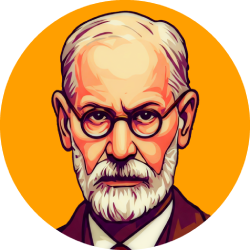Welcome to another article on psychoanalysis! Today, we will explore how Sigmund Freud’s theories were received on two different continents: America and Europe. It is fascinating to see how the same ideas can have such different impacts on varied cultural and historical contexts.
Introduction to Freud’s theories
Before diving into reception differences, it is important to understand what Freud’s theories propose. In short, Freud believed that our behavior is influenced by our unconscious thoughts, which are often the result of childhood experiences and internal conflicts.
His work covers from personality structure to the way we deal with stress and anxiety. It is a vast and complex body of work that influenced not only psychology, but also philosophy, literature and art.
The European Reception
In Europe, especially in Vienna, where Freud lived and worked, his theories were initially received with a mixture of fascination and skepticism. The European intellectual community of the time was open to new ideas, especially those that challenged traditional norms.
Europe, with its rich history of philosophical and scientific thinking, provided fertile soil for the growth of Freudian ideas. Europeans were more likely to engage in deep discussions about human nature, which helped spread Freud’s theories.
The American reception
Across the Atlantic, the reception of Freud’s theories in the United States was different. Initially, there was a significant interest in Freud’s ideas, especially among mental health professionals.
However, American culture, with its focus on pragmatism and self-help, Sometimes saw Freud’s theories as very theoretical or pessimistic. The idea that our thoughts and behaviors are influenced by unconscious factors, often beyond our control, did not align themselves perfectly with American work ethics and belief in the power of individual choice.
Cultural and Historical Impact
The way Freud’s theories were received was also influenced by cultural and historical factors. In Europe, the postwar has brought a willingness to question traditional values and explore new perspectives on humanity.
Already in the United States, the growth of popular psychologism and the expansion of psychology as an academic and clinical discipline created a terrain where Freud’s ideas were able to be adapted and, in some cases, simplified to a broader audience.
CONSEQUENCES AND LEGATE
Today we can see the legacy of Freud’s theories in both Europe and the United States. In clinical psychology, therapies based on their ideas continue to be used, although with many adaptations and criticisms.
Moreover, Freud’s influence can be seen in art, literature and cinema, where themes such as the unconscious, the repression and the Oedipus complex are often explored.
In short, the reception of Freudian theories on American and European continents reflects the complexities of the dissemination of ideas in different cultural and historical contexts. While differences in receptivity are remarkable, Freud’s lasting impact on both sides of the Atlantic is a testimony of the depth and relevance of his work.
I hope this journey through Freud’s theories and its reception has inspired us to reflect on how ideas can travel and transform. Until the next article, where we will explore more fascinating aspects ofpsychoanalysis!


